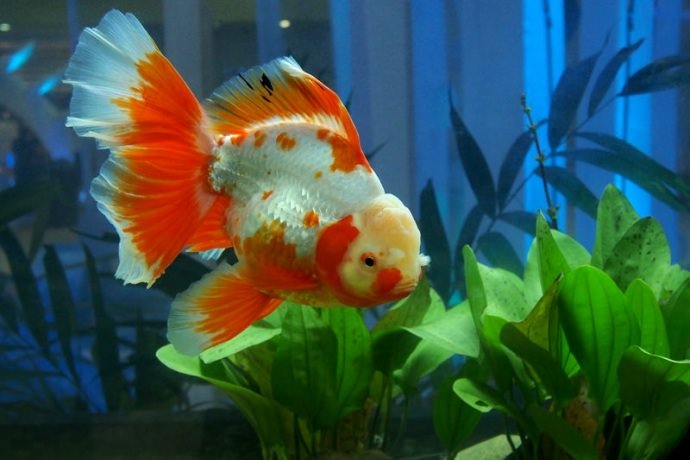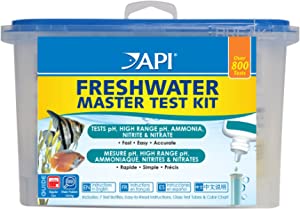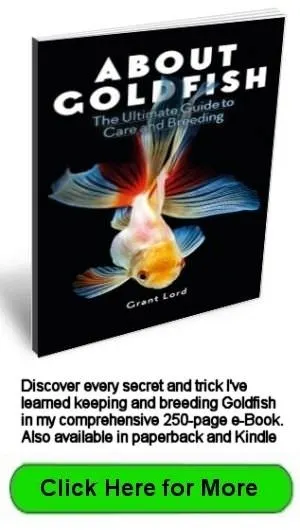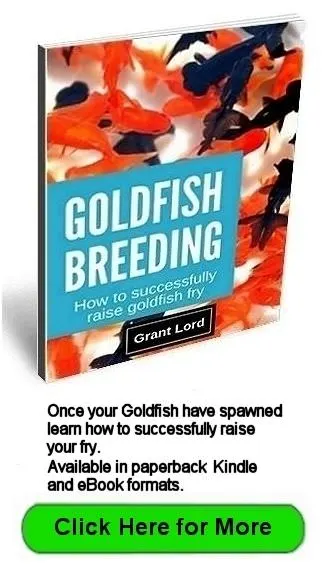- Home
- General Care
- How Much Room do Goldfish Need?
How Much Room Do Goldfish Need?
Are you confused by all the different answers you find?

The reason there are so many different answers to the question "how much room do Goldfish need?" is because there is no single correct answer to the question.
Within reason, what size aquarium you need is not the most important consideration.
The most important consideration is…how will you maintain high water quality?
For Goldfish to thrive, their water must meet four parameters:
- Ammonia level – the ammonia level must be zero ppm (parts per million)
- pH – ideally around 7.4, but if the water isn’t high in nitrates or other pollutants affecting the pH level, Goldfish will tolerate a range of between 6.5 – 8.5
- Nitrates – below 30 ppm (parts per million). High nitrates are usually indicated by low pH
- Oxygen level – Goldfish can tolerate lower oxygen levels than some fish species, but prolonged low levels creates stress.
What Causes Water Quality to Drop?
The primary reason water quality drops is if animal waste or other material such as dead plant or animal life is introduced into the water and there is insufficient biological filtering to remove that waste.
Dry prepared foods are a major source of water pollution in aquariums. If more is fed than the fish can eat in one or two minutes, it quickly dissolves into inedible dust.
How quickly water quality drops is determined by these factors:
- The number and/or size of fish per gallon/liter
- The food being fed and how much. High protein foods pollute more than vegetable-based foods.
- How much plant life is present
- Whether filtration is installed
The way to track the change in water quality is to use cheap, readily available water test kits. These kits show how quickly your aquarium water is turning toxic.
Just because water is clean and clear does not mean the pH, ammonia and nutrient levels are safe.
If the water quality degrades faster than you can manage to maintain it, then you need to change something to reduce the amount of maintenance needed.
Commonly Suggested Aquarium Requirements
Here are some examples of the more common aquarium requirements given as guides to how much room goldfish need:
- 20 US gallons for the first fish, 10 gallons for each additional fish. This guide is usually given for fancy varieties. For the more active larger growing varieties such as Comets and Shubunkins, 30 gallons for the first fish and 15 for each additional fish is suggested.
- One gallon per inch of body length
- 24 square inches of surface area per inch of fish
The only measurement that is useful is 24 square inches of surface area per inch of fish.
This measurement has long been quoted, (since 1948 in The Goldfish by Hervey and Hems), and should be used as a guide if an aerator or filter system is not going to be installed.
This calculation may influence what aquarium you buy as without aeration or filtration, the shape of an aquarium dictates how many fish it can support. If two aquariums each have 288 square inches of surface area and one holds 30 gallons and the other 50 gallons, each will only support the same numbers of fish.
A 24" x 12" x 15" aquarium has 288 square inches of surface area, so should be able to supply enough oxygen for one 12 inch Goldfish (288/24=12). (For fancy varieties that have more body mass per inch, halve the fish size).
Imagine a 12 inch Comet Goldfish in a 24 inch long aquarium. Including its caudal fin, the fish could stretch the full length of the aquarium.
This example clearly shows the problem when trying to apply sizes or measurements without also considering how water quality is going to be maintained.
Water changes, 10%, 20%, 30%?
Some websites try to be helpful by recommending regular small water changes. The amount to change ranges from 10% upwards per week. Often there is no mention of fish size or numbers in relation to aquarium size, nor whether there is a filtration system installed.
If we take an extreme example of a 6 inch Goldfish in a two gallon bowl, a weekly 10% water change will be totally inadequate. A complete water change every few days would be more appropriate.
Making partial water changes only delays when a complete water change will be necessary, as the water that remains after each partial change becomes more and more polluted.
What to Consider When
Buying an Aquarium for Goldfish
Here are some important questions you need to answer before buying an aquarium:
- How much physical space do I have?
- How much time do I have available to maintain the aquarium?
- How easy will it be to do water changes?
- How many fish, and of what variety do I want to keep?
- Do I want the fish to grow?
- Is there a power supply close by?
- Will a filter system be installed (highly recommended)?
The answers to these questions then determine how easy or hard it will be to maintain high water quality for your Goldfish.
Using some simple examples, we can get an idea of how much work will be required for a number of different setups. In these examples the fish will be three inch (75mm) body length Comets and the 15 US gallon (60 liter) aquarium is not planted:
15 gallon aquarium, 2 three inch fish, complete water change weekly
15 gallon aquarium, 2 three inch fish, filter, complete water change fortnightly
15 gallon aquarium, 4 three inch fish, complete water change twice weekly
15 gallon aquarium, 4 three inch fish, filter, complete water change weekly
So, the answer to the question “how much room do Goldfish need?” is…depends on the setup.
The Balanced Aquarium
The ideal aquarium setup is the balanced aquarium. A balanced aquarium means all waste entering the closed water system is removed by aquatic plants and water changes are seldom required, if at all.
This ideal situation only works when there are a few fish in a very large, heavily planted aquarium.
This setup is not possible for most aquarists, so the easiest solution to removing harmful toxins produced by waste is to install some form of filtration that does the work of the plants.
Filtration
We know Goldfish produce a lot of waste; they are big eaters, so to keep their water pristine, we have to make water changes whenever a water test indicates a build-up of toxins has reached a level that will start to have a detrimental effect on our fish.
Of the four parameters we use to measure water quality, after a low oxygen level, the presence of ammonia is the most dangerous.
We can eliminate this risk by installing a filter system. A properly installed filter works very well to stop ammonia forming, but when it converts ammonia to less harmful nitrates, we get a build up of nitrates which a filter can’t remove.
We either need a large number of aquatic plants in the aquarium or make regular water changes.
Other Considerations
If you make regular water changes and keep their water pristine, your Goldfish will continue to grow, even in a small aquarium. Goldfish do release growth inhibiting hormones, which is why you read about Goldfish growing to the size of their container.
If water changes are frequent enough, the hormones don’t get a chance to build up.
Some General Guidelines
Start with small juvenile fish. They will grow if their water is kept in pristine condition, so be prepared to up-size their aquarium at some stage, or reduce fish numbers.
Keep fish numbers low. A few well cared for Goldfish will reward their owner with low maintenance requirements and rare, if any, health issues.
Get the biggest aquarium you can manage, bearing in mind that a 15 gallon aquarium is much easier to physically manage than a 100 gallon aquarium.
Install a filter. Filters make maintenance so much easier by reducing the frequency of water changes.
Buy a water test kit. This is used to work out how often you need to make water changes.
Here are some broad guidelines for how many fish you can keep in smaller aquariums. These numbers are based on Comet Goldfish, and having a filter installed. Fancy varieties need more gallons per inch than Comets because they have a greater body mass.
These guidelines are considered minimum requirements for the numbers and sizes of fish suggested, and it is assumed the fish will grow and need a bigger setup at some stage unless numbers are reduced.
15 US gallons (60 liters), two 2 - 2 ½ inch (50-65mm) fish
20 US gallons (75 liters), two 2 ½ - 3 inch (65-75mm) fish
30 US gallons (115 liters), three 3 inch (75mm) fish
40 US gallons (150 liters), four 3 inch (75mm) fish
50 US gallons (190 liters), five 3 inch (75mm) fish
Once the filter is properly cycled, slowly build up the numbers of fish to allow the filter to adjust to the increased waste load. Make daily water tests to check for ammonia. When all the fish are present, take daily water tests to determine when a water change is required, indicated by a lowering pH reading or nitrates above 30 ppm.
Summary
Get the biggest aquarium you can physically manage.
Install the appropriately sized filter.
Start with low numbers of small fish.
Buy a water test kit
Use the water test kit to establish how often you need to make water changes, and if it is too often, reduce the number of fish or get a larger aquarium.
Top of How Much Room do Goldfish Need page





